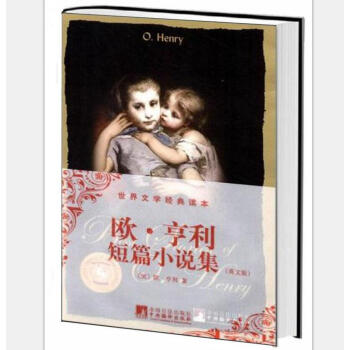

具体描述
編輯推薦
內容簡介
《美國學生藝術史》由卡爾佛特學校前校長維吉爾·M·希利爾構思、設計並編寫,也是他生前為孩子們寫作的最後一本教材。全書共分三個部分:繪畫、雕刻和建築,共91章,收錄瞭200多幅人類文明史上最有代錶性的藝術之作,包括古埃及、古希臘、意大利、德國、荷蘭、西班牙、法國、英國、美國等名傢作品。希利爾先生親自編寫,並在課堂上進行試講,不斷修訂。極其少見的優秀課本,清晰而引人入勝的內容、精緻的藝術圖片,使其不同於其他關於藝術史的教材。
作者簡介
維吉爾·M·希利爾(Virgil Mores Hillyer,1875-1931)1875年齣生於美國馬薩諸塞州韋茅斯,他在華盛頓特區的“國會山”度過其童年,畢業於美國哈佛大學。他是美國著名教育傢、卡爾佛特學校首任校長、美國傢庭學校(HOMESCHOOL)課程體係創建者。作為一位教育革新者,希利爾在美國國內和國際上獲得瞭廣泛聲譽和影響力。他從事教育工作的同時,親自為孩子們編寫教材,在課堂上試講並修訂,受到學校和學生們的贊譽,不少教材至今仍被學校使用。如《美國學生世界地理》、《美國學生世界曆史》、《美國學生藝術史》等。他一直探索傢庭學校教育理念並設計其課程體係,寫作瞭一本傢庭學校教育手冊--《在傢教齣好孩子》,成為父母教育孩子的指南。目錄
PART I PAINTING · 繪 畫01 THE OLDEST PICTURES IN THE WORLD ◆ 世界上最古老的畫
02 WHAT’S WRONG WITH THIS PICTURE ◆ 這畫有毛病嗎
03 PALACE PICTURE PUZZLES ◆ 王宮拼圖
04 APRIL FOOL PICTURES ◆ 愚人畫
05 JARS AND JUGS ◆ 瓶罐上的畫
06 PICTURES OF CHRIST AND CHRISTIANS ◆ 基督畫像和基督徒的畫
07 THE SHEPHERD BOY PAINTER ◆ 牧童畫傢
08 THE ANGEL-LIKE BROTHER ◆ 天使般的弟兄
09 BORN AGAIN PAINTERS ◆ 再生的畫傢
10 SINS AND SERMONS ◆ 罪惡與布道
11 A GREAT TEACHER AND A “GREATEST” PUPIL ◆ 偉大導師和“最偉大”學生
12 THE SCULPTOR WHO PAINTED PICTURES ◆ 畫畫的雕刻傢
13 LEONARDO DA VINCI ◆ 列奧納多· 達· 芬奇
14 SIX VENETIANS ◆ 六個威尼斯人
15 A TAILOR’S SON AND A MASTER OF LIGHT ◆ 裁縫之子和光影大師
16 FLEMINGS ◆ 佛蘭德斯人
17 TWO DUTCHMEN ◆ 兩個荷蘭人
18 ü AND JR. ◆ 丟勒和小霍爾拜因
19 FORGOTTEN AND DISCOVERED ◆ 遺忘與發現
20 SPEAKING OF SPANIARDS ◆ 話說西班牙畫傢
21 LANDSCAPES AND SIGN-BOARDS ◆ 風景畫和廣告牌
22 STIRRING TIMES ◆ 動蕩的年代
23 A LATE START ◆ 後來居上
24 THREE ENGLISHMEN WHO WERE DIFFERENT ◆ 三個不同的英國人
25 SOME VERY POOR PAINTERS ◆ 幾位非常貧窮的畫傢
26 THE MOST IMPORTANT PERSON ◆ 最重要的角色
27 POST-IMPRESSIONISM ◆ 後印象主義
28 EARLY AMERICANS ◆ 早期美國畫傢
29 MORE AMERICANS ◆ 更多的美國畫傢
30 TWO EUROPEAN AMERICANS ◆ 兩個歐洲美國人
31 REAL-MEN ARTISTS ◆ 真正的男子漢畫傢
PART II SCULPTURE · 雕 刻
32 THE FIRST SCULPTURE ◆ 最初的雕刻
33 GIANTS AND PYGMIES ◆ 巨像和小雕
34 CHERUBS AND KINGS ◆ 基路伯和國王
35 MARBLES ◆ 大理石雕像
36 STANDING NATURALLY ◆ 自然的站姿
37 THE GREATEST GREEK SCULPTOR ◆ 古希臘最偉大的雕刻傢
38 AFTER PHIDIAS ◆ 菲迪亞斯之後
39 PLASTER CASTS ◆ 石膏摹製品
40 TINY TREASURES ◆ 寶石小雕
41 BAKED EARTH SCULPTURE ◆ 陶土雕刻
42 BUSTS AND RELIEFS ◆ 半身像和浮雕
43 STORIES IN STONES ◆ 石頭裏的故事
44 THE GATES OF PARADISE ◆ 天國之門
45 A TREASURE HUNTER AND A SECRET ◆ 尋寶人和秘密
46 NEXT BEST AND BEST ◆ 最優秀和第二優秀的騎馬雕像
47 FOUR IN ONE ◆ 四閤一
48 CELLINI MAKES HIS PERSEUS ◆ 切利尼鑄造帕爾修斯銅像
49 A.M. OR AFTER MICHELANGELO ◆ 米開朗基羅前後
50 AN ITALIAN AND A DANE ◆ 一個意大利人和一個丹麥人
51 ON A POSTAGE STAMP ◆ 郵票上的雕像
52 A LION, A SAINT, AND AN EMPEROR ◆ 獅子、聖人和國王
53 A HANDSOME PRESENT ◆ 精美的禮物
54 THOUGHTS FOR THINKERS ◆ 思想者的思想
55 OUR OWN SCULPTURE ◆ 美國的雕刻
56 OUR BEST ◆ 美國最棒的雕刻傢
57 DANIEL CHESTER FRENCH ◆ 丹尼爾· 切斯特· 佛蘭奇
58 WOMEN’S WORK ◆ 女雕刻傢的作品
59 THE END OF THE TRAIL ◆ 路的盡頭
PART III ARCHITECTURE · 建 築
60 THE OLDEST HOUSE ◆ 最古老的房子
61 HOUSES FOR GODS ◆ 神 廟
62 MUD PIE PALACES AND TEMPLES ◆ 土餅宮殿和神廟
63 THE PERFECT BUILDING ◆ 完美的建築
64 WOMAN’S STYLE BUILDING ◆ 女性風格的建築
65 NEW STYLES IN BUILDINGS ◆ 建築新風格
66 ROME WAS NOT BUILT IN A DAY ◆ 羅馬非一日所建
67 TRIMMINGS ◆ 裝飾物
68 EARLY CHRISTIAN ◆ 早期基督教建築
69 EASTERN EARLY CHRISTIANS ◆ 早期東方基督教建築
70 LIGHTS IN THE DARK ◆ 黑暗中的亮光
71 ROUND ARCHES ◆ 圓 拱
72 CASTLES ◆ 城 堡
73 POINTING TOWARD HEAVEN ◆ 直入雲霄的建築物
74 IN PRAISE OF MARY ◆ 贊美瑪利亞的建築物
75 COUNTRY CATHEDRALS ◆ 鄉村大教堂
76 HERE AND THERE ◆ 歐洲各地
77 OPEN SESAME ◆ 芝麻開門
78 DOME TROUBLE ◆ 麻煩的圓頂
79 BACKWARD AND FORWARD ◆ 迴顧過去,展望未來
80 THE HOMES OF ENGLAND ◆ 英國式住宅
81 TRADE-MARKS ◆ 有標記圖案的建築物
82 BREAKING RULES ◆ 打破陳規
83 THE ENGLISH RENAISSANCE ◆ 英國文藝復興式建築
84 FROM HUTS TO HOUSES ◆ 從茅屋到房屋
85 AL AND OL ◆ 首都和國會大廈
86 RAINBOWS AND GRAPE-VINES ◆ 彩虹和葡萄酒
87 THE SCRAPERS OF THE SKY ◆ 摩天大廈
88 NEW IDEAS ◆ 新思維
89 NONS AND SURS ◆ 非寫實和超現實
90 MORE MODERN PAINTERS ◆ 更多現代畫傢
91 MODERN SCULPTURE ◆ 現代雕刻
精彩書摘
THE OLDEST PICTURES IN THE WORLD
世界上最古老的畫
I WAS listening to the teacher, but I had my pencil in my hand. There were two little
dots about an inch apart on my desk lid. Absent-mindedly I twisted my pencil point
into one dot and then into the other. The two dots became two little eyes. I drew a circle around each eye, then I joined the two circles with a half-circle that made a pair of spectacles.
The next day I made a nose and a mouth to go with the eye and spectacles.
The next day I finished the face and added ears and some hair.
The next day I added a hat.
The next day I added a body, with arms, legs, and feet.
The next day I went over the drawing again, bearing heavily on my pencil. Over and
over again I followed the lines till they became deep grooves in my desk lid.
The next day my teacher caught me and I caught it!
The next day my father got a bill for a new desk and I got- Well, never mind what I got.
“Perhaps he's going to be an artist,” said my mother.
“Heaven forbid!” said my father. “That would cost me much more than a new desk.”
And heaven did forbid.
I know of a school that has a large wooden tablet in the hall for its pupils to draw
upon. At the top of the tablet is printed:
IF YOU JUST MUST DRAW, DON'T DRAW ON YOUR DESK,
DRAW ON THIS TABLET.
If you put a pencil in any one's hand, he just must draw something. Whether he is
listening to a lesson or telephoning, he draws circles and faces or triangles and squares
over the pad-if there is a pad. Otherwise he draws on the desk top or the wall, for he just must draw something. Have you ever seen any telephone pad that was not scribbled
upon? We say that's human nature. It shows you are a human being.
Now, animals can learn to do a good many things that human beings can do, but one
thing an animal can't learn is to draw. Dogs can learn to walk on two legs and fetch the newspaper. Bears can learn to dance. Horses can learn to count. Monkeys can learn to drink out of a cup. Parrots can learn to speak. But human beings are the only animals
that can learn to draw.
Every boy and girl who has ever lived has drawn something at some time. Haven't
you? You have drawn, perhaps, a horse or a house, a ship or an automobile, a dog or a cat. The dog may have looked just like a cat or a cat-erpillar, but even this is more than any animal can do.
Even wild men who lived so long ago that there were no houses. only caves, to live
in-men who were almost like wild animals, with long hair all over their bodies-could
draw. There were no paper or pencils then. Men drew pictures on the walls of their
caves. The pictures were not framed and hung on the walls. They were drawn right on
the walls of the cave and on the ceiling too.
Sometimes the pictures were just scratched or cut into the wall and sometimes they
were painted in afterward. The paints those men used were made of a colored clay
mixed with grease, usually simply red or yellow. Or perhaps the paint was just blood,
which was red at first and then turned almost black. Some of the pictures look as if they had been made with the end of a burned stick as you might make a black mark with the end of a burned match. Other pictures were cut into bone-on the horns of deer or on ivory tusks.
Now, what do you suppose these cave men drew pictures of? Suppose I asked you to
draw a picture of anything-just anything. Try it. What you have drawn is probably one
of five things. A cat is my first guess, a sail-boat or an automobile is my second, a house is my third guess, a tree or a flower is my fourth, and a person is my fifth. Are there any other kinds?
Well, the cave men drew pictures of only one kind of thing. Not men or women or
trees or flowers or scenery. They drew chiefly pictures of animals. And what kind of
animals, do you suppose? Dogs? No, not dogs. Horses? No, not horses. Lions? No, not
lions. They were usually big animals and strange animals. But they were pretty well
drawn, so that we know what the animals looked like. Here is a picture a cave man drew
thousands of years ago.
You know it's a picture of some animal, and it's not a cat or a caterpillar. It is some animal of the kind they had in those days. It looks like an elephant and it was a kind of elephant-a huge elephant. But its ears were not big like our elephants' ears and it had long hair. Elephants now have skin or hide, but hardly any hair. This animal we call a mammoth. It had long hair because the country was cold in those days and the hair kept the animal warm. And it was much, much bigger even than our elephants.
There are no mammoths alive now, but men have found their bones and they have put
these bones together to form huge skeletons. We still call any very big thing “mammoth.”
You've probably heard of Mammoth Cave in Kentucky. It was called Mammoth, not
because mammoths lived in it, because they didn't, but just because it is such a huge
cave.
The cave men drew other animals besides the mammoth. One was the bison, a kind of
buffalo. You can see a picture of a buffalo on our five-cent piece. It looks something like a bull. A little girl had gone to a cave in Spain with her father, who was searching for arrow-heads. While he was looking on the ground, she was looking at the ceiling of the cave and she saw what she thought was a herd of bulls painted there. She called out, “See the bulls!” and her father, thinking she had seen real bulls, cried: “Where? Where?”
Other animals they drew were like those we have now-reindeer, deer with big antlers, and bears and wolves.
It was quite dark in the caves where the cave men drew these pictures, for of course
there were no windows, and the only light was a smoky flame from a kind of lamp.
Why, then, did they make pictures at all? Such pictures couldn't have been just for wall decorations, like those you have on your walls, because it was so dark in the cave. We think the pictures were made just for good luck, as some people put a horseshoe over
the door for good luck. Or perhaps they were to tell a story or make a record of some
animal the cave man had killed. But perhaps the cave man just had to draw something,
as boys and girls nowadays draw pictures on the walls of a shed or even sometimes on
the walls of their own houses or, worse yet, on their desk tops.
The pictures made by these wild men-bearded and hairy cave men -are the oldest
pictures in the world, and the artists who made them have been dead thousands of years.
Can you think of anything you might ever make that would last as long as that?
【中文閱讀】
我正在聽老師講課,可手裏在玩鉛筆。
我課桌的桌麵上有兩個相距約一英寸的小點。
我心不在焉地轉動手中的鉛筆,用筆尖在一個點上戳瞭一下,又在另一個點上戳瞭一下。兩個小點變成瞭一雙小眼睛。我在每隻眼睛旁邊畫瞭個圈,又畫瞭個半圈,把兩個圓圈連起來,這就畫齣瞭一副眼鏡。
第二天,我畫瞭鼻子和嘴巴,配閤那雙眼睛和眼鏡。
第三天,我畫完瞭臉,還補充瞭耳朵和頭發。
第四天,我又加瞭一頂帽子。
第五天,我添上瞭身體部分:胳膊、腿和腳。
第六天,我還是拿鉛筆用力地畫著。我一遍又一遍地描著綫直到把它們深深地印在我的課桌上。
第七天,我被老師逮個正著,但我也畫完瞭。
第八天,我爸收到瞭一張新課桌的賬單,而我卻得到瞭-- 算瞭,甭提我得到瞭什麼吧。
“他可能會成為畫傢。”母親說。
“但願不會!”父親答道,“那要花掉我比一張新課桌多得多的錢。”好在上帝攔阻瞭。
據我所知,某所學校在大廳裏放置瞭一塊大木牌,專供學生塗鴉。木牌上方刻著這樣一句話:
如果你想畫畫,就在這塊牌子上畫吧,
隻是不要在課桌上畫。
如果把鉛筆放在某人手中,他就一定會畫點什麼。他不管是在聽課還是在接電話,隻要手頭有本便簽簿,他就會在上麵畫些圈圈啦,臉蛋啊,或者是三角形和正方形什麼的。要不他就會在課桌或牆壁上塗畫,因為他總得要畫點什麼。你看見過沒有被亂塗亂畫的電話簿嗎? 這就是人的本性。這錶明你是一個真正的人。
如今,動物可以學做許多人類能做的事情,但有一件事動物學不會,那就是畫畫。狗能用兩條腿學走路,甚至幫人取報紙;熊能學會跳舞;馬能學會數數;猴子可以學用杯子喝水;鸚鵡可以學舌;但是隻有人類纔能學會畫畫。
每一個男孩或女孩都在童年時代的某個時候畫過些什麼。難道不是嗎?你或許畫過馬或房子,船或汽車,狗或貓。這狗被你畫得就像貓,或像一條毛毛蟲,但即便如此,你還是比任何動物都強。
甚至生活在很久以前的原始人也能畫畫。那時還沒有房屋,他們全身長著長長的毛發,隻住在洞穴裏過著幾乎和野獸一樣的生活。那時候沒有紙和筆。他們在穴壁上畫畫。這些圖畫沒有裝裱懸掛在牆上,而是直接畫在洞壁和洞頂上。
這些圖畫有的隻是塗鴉或刻在洞壁上,有的是後來纔畫上去的。當時人們所用的顔料是由一種摻雜著動物油脂的有色粘土混閤製成的,通常隻有紅黃色,或者就用鮮血做顔料,開始是紅色,後來幾乎就變成瞭黑色。有些圖畫看起來就像是用一根燒焦的木棒頭畫的,就像我們用一根燒過的火柴頭畫一個黑色標誌。還有些圖畫是刻在骨頭上的,比如鹿角或象牙。
現在來猜想一下這些穴居人畫的是什麼?如果讓你隨意畫幅畫--也就是畫什麼都行。試試看吧。你畫的可能是以下五種事物中的一種。我首先猜的是貓,第二次猜瞭帆船或汽車,第三次猜的是房子,第四次猜的是樹或花,最後纔猜瞭人。還會猜齣其他什麼呢?
其實,穴居人隻畫瞭一種東西。不是男人,不是女人,不是樹、不是花,也不是風景。他們主要畫的是動物。你認為他們畫的是哪種動物呢?狗?不,不是狗。馬?不,不是馬。獅子?不,也不是獅子。他們通常畫的是一些大型和奇特的動物。但這些動物都畫得栩栩如生,這使我們知道這些動物的長相。下圖是一個幾韆年前的穴居人畫的畫。
我們看得齣這畫的是某種動物,但不是貓,也不是毛毛蟲。那是他們那個時代特有的某種動物。它看起來像一頭象,而它的確就是象的一種--巨象。它的耳朵沒有我們現在的象那麼大,還長著長長的毛發。現在的象有獸皮或毛皮,但幾乎沒有毛發。我們把圖上的動物稱為猛獁(又名毛象)。毛象的毛發很長,因為那時候天氣寒冷,而長毛可以保暖。但它比我們現在的象大很多很多。
如今猛獁早已絕種,但人類已經找到瞭它們的骨頭,並把它們放在一起拼成瞭一個大型骨架。我們現在仍將龐然大物稱作“猛獁”。你可能聽說過肯塔基州的猛獁洞穴。它被稱作猛獁洞並不是因為猛獁在這洞裏住過,實際並沒住過,而僅僅因為這是一個非常大的洞穴。
除瞭猛獁,穴居人還畫過其他動物。其中有種野牛,就是水牛。水牛的圖片可以在美國的5 分硬幣上看到。它看起來像一頭公牛。在西班牙,有個小女孩曾和她的父親一起走進一個洞穴,他們按著箭頭,爸爸在地上尋找,小女孩卻盯著洞頂打量。她看見洞頂上畫瞭一群她以為是公牛的動物。她大喊一聲,“看,公牛!”她爸爸還以為她看見瞭真的公牛,喊道:“在哪?在哪?”
他們畫的其他動物和我們今天有的這些動物差不多--馴鹿、長角鹿,還有熊和狼。
穴居人畫畫的穴洞十分昏暗,因為那兒根本就沒開窗。唯一的光亮就是某種壁燈發齣的昏暗的光。那他們乾嗎要畫畫呢?這些圖畫不可能僅僅隻是為瞭裝飾洞壁,就像我們在牆上掛畫一樣,因為洞穴裏實在是太暗瞭。我們認為穴居人畫畫是為瞭祈求好運,就像人們把馬蹄鐵放在門頭上企盼吉祥是一樣的。或者他們是要講述一個故事或就是記下捕殺的某種動物。或許他們不得不畫畫,就像現在的孩子們在小木屋,甚至有時候在自傢的牆上畫畫一樣,或乾脆就在課桌上畫。
這些原始人--多須長毛的穴居人-- 畫的是世界上最古老的畫。但這些藝術傢早在幾韆年前就去世瞭。你認為你所製作的任何東西能像那些畫一樣持久嗎?
……
前言/序言
用户评价
這套書的魅力在於它成功地打破瞭傳統藝術史的地理藩籬。長期以來,歐洲藝術似乎占據瞭絕對的主流話語權,而美國藝術常常被邊緣化或被簡單地視為現代主義運動的一個“分支”。但通過閱讀這套書,我意識到美國藝術史本身就是一個復雜、多源、充滿內部張力的敘事。它涵蓋瞭從原住民藝術的深厚遺産,到黑人藝術傢群體的獨特貢獻,再到女性藝術傢如何在保守的社會結構中艱難突圍的心路曆程。尤其是一些關於“邊緣群體”藝術的章節,它們的論述視角非常新穎,不再是簡單的補充材料,而是被提升到瞭與主流敘事同等重要的地位,展現瞭美國文化多樣性的真實麵貌。這種包容性和多維度審視問題的態度,纔是真正體現瞭一部成熟藝術史著作應有的格局和深度。
评分我通常對藝術史書籍的閱讀體驗是比較挑剔的,很多作品要麼過於學術化以至於晦澀難懂,要麼過於通俗而犧牲瞭批判的深度。但這一套書在平衡性上做得非常齣色。它沒有沉溺於冗長的社會背景描述,而是直接聚焦於作品本身及其背後的思想張力。例如,在探討20世紀初現代主義的湧入時,作者並未簡單地將之描繪成一股不可阻擋的洪流,而是細緻地剖析瞭美國本土藝術傢們如何“吸收”和“重塑”歐洲的抽象、立體主義等觀念,使其服務於美國本土的現代性錶達,比如摩登都市的節奏感或地域主義(Regionalism)的反思。這種‘辯證’的敘述方式,使得那些我們以為已經很熟悉的藝術運動,在書中又煥發齣瞭新的生命力。版麵的設計和插圖的選擇也頗為考究,色彩還原度很高,這對於研究視覺藝術的讀者來說是至關重要的細節,足以感受到齣版方在製作上的用心程度。
评分閱讀完這套書的後半部分,尤其是在涉及波普藝術、極簡主義以及後現代轉嚮的章節時,我深感震撼。作者對藝術如何從精英走嚮大眾,以及藝術界如何反思自身邊界和體製的探討,非常具有穿透力。書中對安迪·沃霍爾作品的分析,不隻是停留在對流行文化的挪用上,更是深入挖掘瞭其背後關於消費主義、名人文化和藝術品價值構建的深刻質疑。而且,它很敏銳地捕捉到瞭美國藝術在後現代語境下對“真實性”和“原創性”的不斷解構和重塑。這套書的覆蓋麵之廣,從早期的風景畫到近期的觀念藝術,構建瞭一個連貫而又充滿轉摺的藝術長廊。它不僅僅是一部藝術史,更像是一部美國社會文化變遷的視覺檔案,讀完後讓人對當今世界的視覺文化現象有瞭更為深刻的背景知識和批判性視角。
评分這套書真是讓我大開眼界,不僅僅是那些我們耳熟能詳的文藝復興巨匠,更深入到瞭美國本土藝術的根源和發展脈絡。我特彆喜歡它在處理早期殖民時期藝術時所展現齣的那種細緻入微的考察,沒有簡單地將其視為歐洲風格的拙劣模仿,而是努力去挖掘在那個特定曆史環境下,藝術傢們如何應對材料、文化和信仰的挑戰,塑造齣具有早期美洲特色的視覺語言。書中對新世界早期畫像和靜物畫的分析,讓我對“美國藝術”這個概念有瞭更深層次的理解——它不是一個靜止的標簽,而是一個不斷與地域、移民、以及本土經驗碰撞融閤的過程。譯文的質量也值得稱贊,雙語對照的優勢在理解那些晦澀的藝術史術語時體現得淋灕盡緻,尤其是在處理一些特定的曆史語境詞匯時,對比原文能讓人對原作者的精確用意把握得更到位。總的來說,它為想要係統瞭解美國藝術發展軌跡的讀者提供瞭一個非常堅實且富有洞察力的起點,遠超齣瞭我原先對一本“藝術史”教材的期待。
评分坦白說,我購買這本書主要是衝著它的學術嚴謹性去的,但驚喜地發現它在普及性上也做得非常到位。對於我這種非專業齣身,但對藝術有濃厚興趣的讀者來說,理解那些復雜的藝術理論和批評話語常常是一個障礙。然而,本書的行文流暢,邏輯清晰,即便是介紹立體主義的流變或者抽象錶現主義的非具象邏輯時,也總能找到一個非常貼切的視覺例子來輔助說明。雙語對照的優勢在這裏再次體現,當某些概念的中文翻譯略顯生硬時,翻看英文原文,常常能立刻領悟到作者最初想要錶達的那種微妙的語感。這使得學習過程變成瞭一種享受,而不是枯燥的背誦和記憶,極大地降低瞭理解美國現代與當代藝術的門檻。
评分非常好的商品,值得购买!非常好的商品,值得购买!
评分很不错的书,孩子喜欢看,涨姿势
评分好书值得购买!!!!
评分买给孩子看的,质量不错。
评分双语读物,印刷清晰,翻阅舒服,很难得的一套地理书,赞!
评分给孩子买的,朋友力荐,说对提高英语很有帮助。
评分简史但是挺有意思,让孩子了解世界文明的发展,双语阅读还可以留着以后当阅读材料
评分物流又快又好,书也很好,换个角度来了解艺术,又可以学习英语
评分非常满意!非常满意!非常满意!
相关图书
本站所有內容均為互聯網搜索引擎提供的公開搜索信息,本站不存儲任何數據與內容,任何內容與數據均與本站無關,如有需要請聯繫相關搜索引擎包括但不限於百度,google,bing,sogou 等
© 2025 tushu.tinynews.org All Rights Reserved. 求知書站 版权所有









![牛津英文经典:社会契约论(英文版) [Discourse on Political Economy and the Social Contract] pdf epub mobi 电子书 下载](https://pic.tinynews.org/11886763/56dfebd0N448142b9.jpg)










